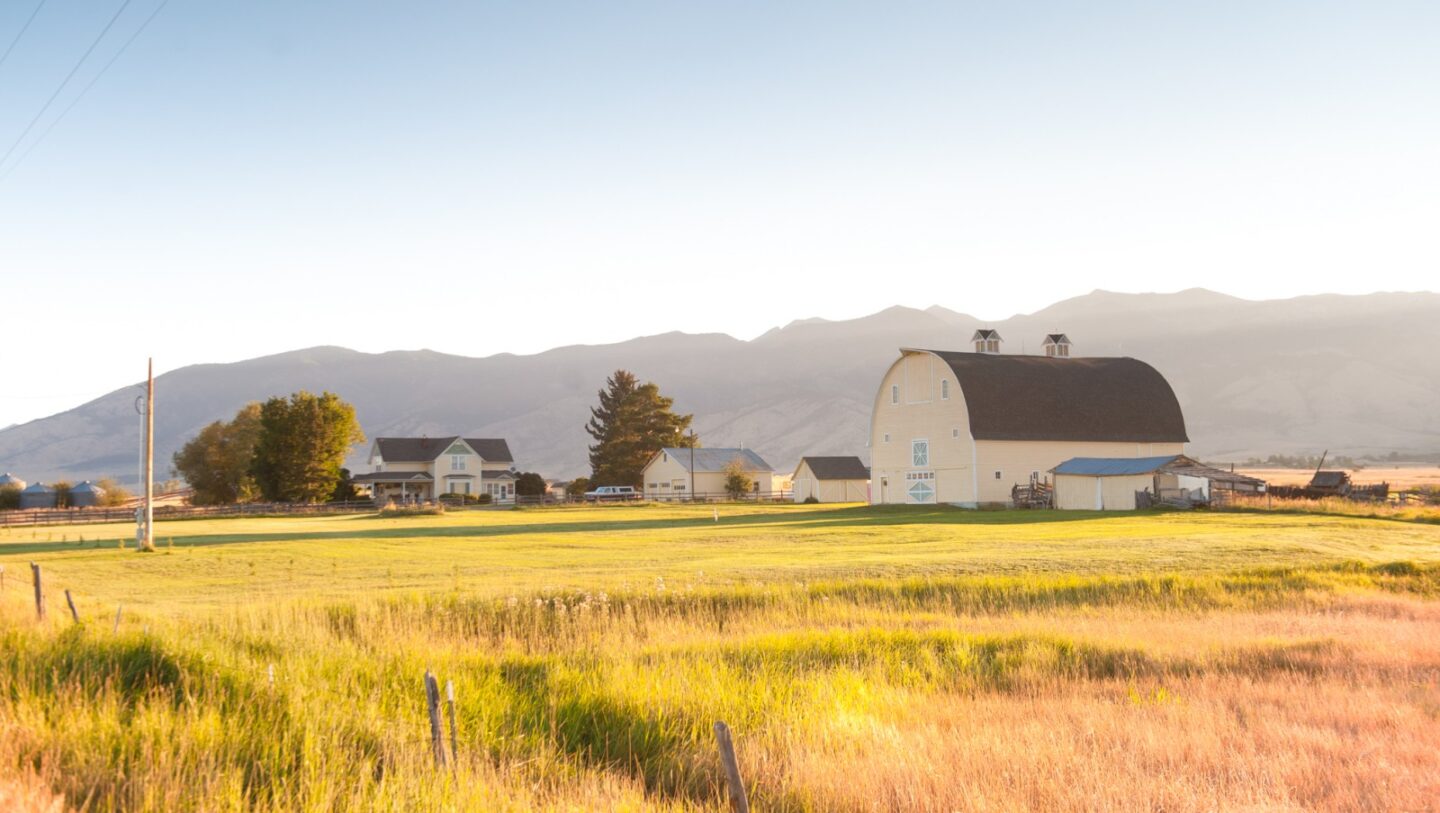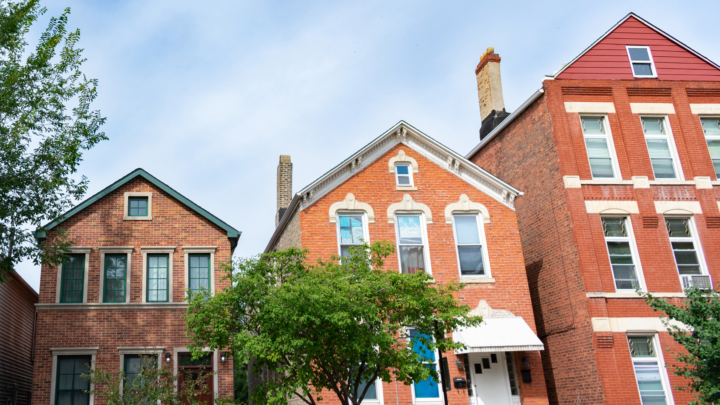USDA Loans: A Complete Guide to Rural Development Loans
Learn more about USDA loans, which are given out by the United States Department of Agriculture (USDA) to help low- or moderate-income people buy, repair or renovate homes in rural areas.

With the help of a USDA loan, owning a home in a rural part of the country might be more accessible than you think. In fact, according to the Consumer Financial Protection Bureau, close to 165,000 people applied for a USDA loan in 2020. If you’re already living in a less populated area or considering buying a home away from the city, you may qualify for a USDA loan with below-market interest rates without needing a down payment.
What is a USDA Loan?
USDA loans are a zero down payment mortgage option backed by the United States Department of Agriculture (USDA) and offered by USDA-approved lenders to help fund rural housing development for low- to moderate-income individuals and families throughout the U.S. These government-backed loans can be used to purchase, build, repair or refinance a home in a rural area.
Types of USDA loans
The USDA provides several Rural Development Single-Family Housing Programs for homeowners, homebuyers and organizations. These government-backed loans, grants and loan guarantees make homeownership possible for many individuals and families. Here are the single-family housing USDA loan programs available.
Guaranteed Loan: This mortgage loan assists USDA-approved lenders in providing low- and moderate-income households with 100% financing for the purchase, build, rehabilitation, improvement or relocation of a primary residence in a rural area.
Direct Loan: USDA Direct Loans are funded by the USDA and processed by your local Rural Development office. Direct Loans are meant to help low- to very-low income borrowers obtain an affordable mortgage when otherwise unable to secure financing for a safe and sanitary house. Loans have a 33 to 38 year term depending on your income level.
Repair and Rehabilitation Loan: Also known as the Section 504 Home Repair Program, this type of loan provides money to low-income homeowners so they can repair or improve their home by removing health, safety or sanitation hazards.
Rural Housing Site Loan: Unlike the other types of USDA loans mentioned, Rural Housing Site Loans are available to private and public non-profit organizations to assist them in purchasing a site and developing housing for low- or median-income families in rural areas as a part of what’s called the Self-Help Program.
How do USDA loans work
Each USDA loan works by providing affordable homeownership opportunities to individuals and families with the goal of creating thriving communities throughout rural areas of the U.S.
Guaranteed Loans help lenders work with low- and moderate-income households by providing a 90% loan note guarantee to approved lenders. The loan note from the USDA reduces the financial risk that can come with lending, so that lenders may offer 100% financing to eligible rural home buyers and owners.
Direct, Repair and Housing Site Loans are funded directly by the USDA. Direct Loans work by reducing the mortgage payments for a short time, so eligible low- and very-low income households can more easily repay a loan to obtain decent, safe and sanitary housing. Repair Loans work by providing money to very-low-income homeowners, so they can repair, improve or modernize their home.
USDA loan benefits
For homeowners and buyers with limited incomes who are located in an eligible rural area, a USDA loan can offer a wide range of benefits compared to other types of mortgages like conventional, FHA and VA. Here are some of the biggest benefits of a USDA loan:
- You can finance up to 100% of the home's value, meaning no down payment is required
- You can secure an interest rate as low as 1%
- No cash reserves are required
- No mortgage insurance is required
- Lower minimum credit score requirement than other loan types
- You can use seller concessions to pay up to 6% of closing costs
How to qualify for a USDA loan
USDA loan requirements vary based on the program you choose, so you’ll want to check the USDA’s Rural Development website to see if you meet all of the specific USDA loan qualifications. Here is a list of some of the common eligibility requirements you may need to meet in order to qualify for USDA financing.
Meet income limits: For Guaranteed Loans, your income can’t exceed 115% of the median household income in your area. For Direct and Repair Loans, you must have an adjusted income that is at or below the applicable low-income limit for the area you're buying in.
Provide proof of citizenship: With Guaranteed and Direct Loans, you must be a U.S. citizen, eligible noncitizen or qualified alien.
Meet property requirements: No matter the type of USDA loan, the property must be a single-family dwelling and be used as your primary residence. Direct loans also specify that the property must be 2,000 square feet or less and can’t be used for income producing activities like a rental or Airbnb.
Be unable to obtain financing elsewhere: Direct and Repair Loans also require that you have to have attempted to apply for affordable credit elsewhere and been unsuccessful at obtaining a loan on terms and conditions that are considered reasonable to meet.
Want to get an estimate of how much you can comfortably afford to spend on a house? Check out Zillow’s Affordability Calculator.
What areas qualify for USDA loans?
Properties located within designated rural areas may be USDA eligible. The USDA defines a rural area as one that is:
- Open country and not part of, or associated with an urban area
- A town, village, city or place that has a population of less than 10,000 people
- Or, a town, village, city or place that is not within a highly-populated metropolitan area (meaning the population must be above 10,000 but below 20,000)
Because rural areas change and grow over time, the USDA conducts reviews every five years to identify areas that no longer qualify for rural home loans. If an area is rapidly growing and in an eligible metropolitan statistical area (MSA), reviews take place every three years. The USDA has a helpful eligibility site where you can search a property by address to see if it’s USDA eligible.
How to apply for a USDA loan
For a USDA Guaranteed Loan, you’ll submit a mortgage application through a USDA approved lender. All other types of USDA loans are processed through your state’s Rural Development Office, so processing times may vary. The USDA is also a government agency, which means they have a limited amount of funding available each year. In some instances, you may have to wait to apply until more government funding is available.
For more specific details on how to apply, visit the USDA’s Rural Development website.
USDA loan rates
Interest rates for USDA Guaranteed Loans are set by the lender and can vary based on a number of factors like your income, credit and likelihood to repay the loan. If you’re eligible for payment assistance, your rate may be as low as 1%. Repair loans also have a fixed 1% rate. USDA Direct Loans, on the other hand, have a fixed-rate of 2.50% for low-income and very low-income borrowers as of May 1, 2022. You can view all current mortgage rates on Zillow.
Closing on a USDA loan
The entire closing process usually takes 45-60 days, from the time you go under contract until you finalize the transaction. Like with other types of mortgages, you’ll have to pay closing costs when purchasing or refinancing a home with a USDA loan. When purchasing, you have the added benefit of seller concessions to cover up to 6% of your closing costs and you can choose to roll your closing costs into your mortgage balance.
The total closing costs for USDA mortgages are typically equal to 3-6% of the purchase price. USDA loans don’t require you to pay a down payment in addition to closing costs, so you save a little bit of money upfront. With USDA loans, you also don’t have to pay private mortgage insurance (PMI) like you would with a conventional loan. However, you will have to pay a guarantee fee — a cost borrowers pay to keep the loan program running — of 1% of the total loan amount upfront at closing, and then a 0.35% fee annually. Usually the total annual fee is divided up and applied to each of your mortgage payments.
Here’s an example of closing costs on a $300,000 home purchase with a USDA Guaranteed or Direct Loan. With full seller concessions, you may owe as little as $0 at closing. Without seller concessions, you may be required to pay between $9,000 to $18,000 in closing costs.
| Purchase price | Down payment | Closing costs | Seller concessions |
|---|---|---|---|
| $300,000 | $0 | $9,000 - $18,000 | You can negotiate to have the seller cover up to $18,000 (or 4%) of your closing costs. |
Is a USDA loan right for me?
USDA loans are an attractive mortgage option for low- to medium-income homebuyers who live in rural areas and may not qualify for a conventional, FHA or VA loan. Consider a USDA rural development loan if you’re interested in buying, refinancing or renovating a home in a rural community that will be your primary residence. The first step is talking to a USDA-approved lender, who can help you explore all the loan options available to find the right mortgage for you.
Written by
Kristijonas Umbrasas
06.24.2022
How much home can you afford?
At Zillow Home Loans, we can pre-qualify you in as little as 3 minutes, with no impact to your credit score.
Zillow Home Loans, NMLS # 10287. Equal Housing Lender
Get pre-qualified


